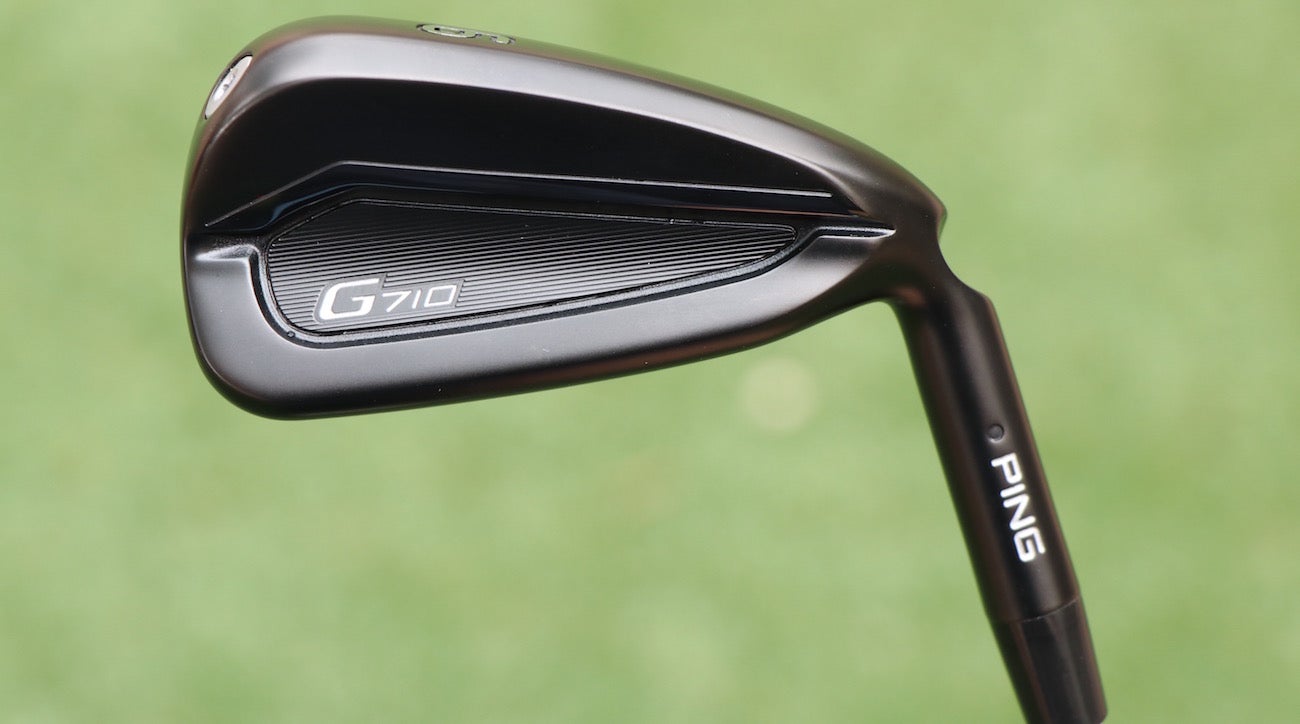The word “forgiving” is a welcome sight for most mid- to high-handicap golfers. No one wants to admit they struggle to consistently hit the center of the face, but unless your name is Tiger Woods or Collin Morikawa, there’s a good chance you spend much of the round living off the heel or toe.
In the latest edition of GOLF’s 2020 ClubTest spotlight, we take a look at 5 game-improvement irons that are designed to soften those round-crushing misses and make them more playable.
Callaway Mavrik
Callaway Mavrik
Set: 4-PW
Our take: Head profile fits a wide range of handicaps. With each face getting the AI treatment, launch, spin and performance is tailored for every iron in the lineup. Callaway’s urethane microspheres reduce unwanted vibrations.
ClubTester’s take (16-hdcp): “Damn, this club looks good. The fact that it performs is just a bonus.”
Robot’s take: Fear not the toe or heel hit. This is one of the most forgiving irons in the category.
Cobra King SpeedZone
Cobra King SpeedZone
Set: 4-PW
Our take: All-new topline made of carbon fiber allows more weight to be positioned low in the head to max out mishit protection. A forged PWRShell insert and undercut design enhance the trampoline effect on the responsive face.
ClubTester’s take (13-hdcp): “Carbon fiber on the crown is a nice touch. Was worried it might be too busy.”
Robot’s take: Strong speed and carry values. Cobra has a winner here.
Mizuno JPX 919 Hot Metal
Mizuno JPX 919 Hot Metal
Set: 4-GW, 5-SW
Our take: To stand out from the pack in the equipment industry, you need a game-changing design, technology or both. Luckily for Mizuno, JPX 919 Hot Metal is a combination of the two. The iron is anchored by a high-strength Chromoly 4140M steel alloy that allowed for a 360-degree undercut, multi-thickness face and re-engineered sound ribs in the topline developed to hit specific vibration patterns for feedback enhancement at impact. With a sweet spot that’s half a millimeter lower in the 4-iron through 9-iron, lofts were strengthened in the 4- through 7-iron to keep launch angle in line with the previous version while increasing distance at the same time. The set also has a steeper transition into more compact scoring irons and wedges, with set-matching wedges made from X30 steel for feel. A worthy option for golfers who need hangtime and rpm in their life. Both spin and launch numbers were near the top end during robot trials, and those who tested reported seeing similar characteristics as well.
ClubTester’s take (20-hdcp): “Honestly doesn’t look like a typical game improvement iron to me. Launches high and goes forever, even when I only catch a piece.”
Robot’s take: Expect higher launch and higher spin—and approach shots that stop on a dime.
Ping G710
Ping G710
Set: 4-SW
Our take: Generous tungsten weights positioned in the heel and toe of the 17-4 stainless-steel body deliver an abundance of forgiveness. Hollow-body design is paired with a maraging steel face to take ball speed to another level.
ClubTester’s take (12-hdcp): “Dark finish masks some of the beef. I could get used to looking down at an iron like this.”
Robot’s take: One of the most forgiving irons in the class.
TaylorMade SIM Max
TaylorMade SIM Max
Set: 4-LW
Our take: The vast majority of high-handicap golfers don’t find the middle of the face with regularity. It’s a fact of life. TaylorMade’s SIM Max is designed to make things a bit easier with a package centered around mitigating mishits. The iron is highlighted by an ultrathin 1.5-millimeter face, along with a 360 undercut in the cavity that delivers ample horsepower. TaylorMade’s Inverted Cone Technology expands the sweet spot, but instead of continuing to place it in the center of the face for every iron, it was purposely placed closer to the toe in the long irons (historical club data contributed to the adjustment) to generate a draw bias. An Echo Dampening System in the lower portion of the cavity pairs with a mass-efficient beam spanning the back bar to remove unwanted vibrations around the perimeter. It also provides the multimaterial iron with the buttery feel of a forged-construction product.
The SIM Max checks all the boxes for a game improvement model. Robot testing revealed an iron that was, on average, three yards longer in the carry department than the competition. Mishits still produced favorable results. Positive feedback during player testing reinforced SIM Max’s spot near the top of the Game Improvement pecking order.
ClubTester’s take (15-hdcp): “Futuristic look with out-of-this-world technology. Feels like I can miss it anywhere and the ball still goes.”
Robot’s take: A top-3 Game Improvement in ball speed retention, carry and overall forgiveness.
